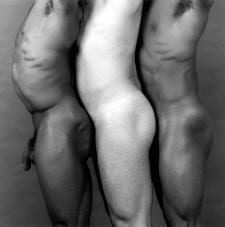One of the great ironic comedies of the late-‘80s culture wars was the obscenity trial of Cincinnati’s Contemporary Arts Center, and by extension Robert Mapplethorpe. The US government, led by rightwing Moral Majority crusaders like Jesse Helms and Alfonse D’Amato, was on a rampage against the National Endowment for the Arts — specifically, its funding of shows like Mapplethorpe’s The Perfect Moment, shut out of its original venue, the Corcoran Gallery of Art in Washington, for its graphic content.
As Mapplethorpe was no longer alive to defend himself, expert art witnesses were brought in to testify to the artistic merit of someone’s willing ass swallowing a forearm. The jury saw fisting, but they were treated to enthusiastic rhapsodies of triangular compositions, delicate chiaroscuro and the traditions of classical photography.
The aforementioned irony lies in just how paradoxical that defence is: it simultaneously misses the point by a country mile and affirms the core of Mapplethorpe’s photographic achievement. This achievement is on full display at the Olga Korper Gallery. Korper (who represents the Mapplethorpe estate in Canada) curated the show herself, and her care and precision is both an homage to and echo of the work on the walls. There is a wide sampling here, and Mapplethorpe devotees will delight in seeing his various phases, subjects and concerns represented equally and intelligently. By the same token, Mapplethorpe novices will be treated to a singularly deft overview of his work; Korper’s curation is such that it prompts a thirst for further knowledge and investigation, no easy feat for an artist as arguably overrepresented as Mapplethorpe.
The show flows evenly and seamlessly from one theme to the next: one is greeted by his late flower images, and then one is taken into celebrity portraits, the erotica (his extreme SM pictures are notably absent), turning the corner into his suite of images of bodybuilder Lisa Lyon, then coming to rest finally amongst yet more flowers and still-lifes.
Mapplethorpe is a master of precision, and one of the great delights of the show (and his work in general) is his navigation of black and white. He did scarcely any colour photography, and yet, out of that particular monochromatic range, he wrung some astounding poetry: his whites positively glow (see especially the sumptuously alabaster cranium in Ken Moody and Robert Sherman, 1984), and his blacks are deep and velvety. His eye for arranging these elements is unfaltering. His handling of the vast tectonic shapes of Mary Lou Greene (1981) — the harsh geometry of her clothing and the pedestal dancing with her severe profile — is just as assured as the linear riot of the electric Grace Jones portraits (her costume and body makeup care of Keith Haring).
And therein lies the paradox: his masterful composition and tone are the necessary armature for the “obscene” images. They don’t elevate the latter from pornography; they anchor the pornographic in artistic rigour, thereby reminding us just how profound lust (and images of lust) can be. And the show at the Olga Korper Gallery reminds us that, for this very reason, the pornographic can’t be cherry-picked out of Mapplethorpe’s oeuvre: his images of flowers are just as alive with desire as his BDSM work. Mapplethorpe is a canonical reminder that all gazes are lustful and all art is desire.

 Why you can trust Xtra
Why you can trust Xtra


